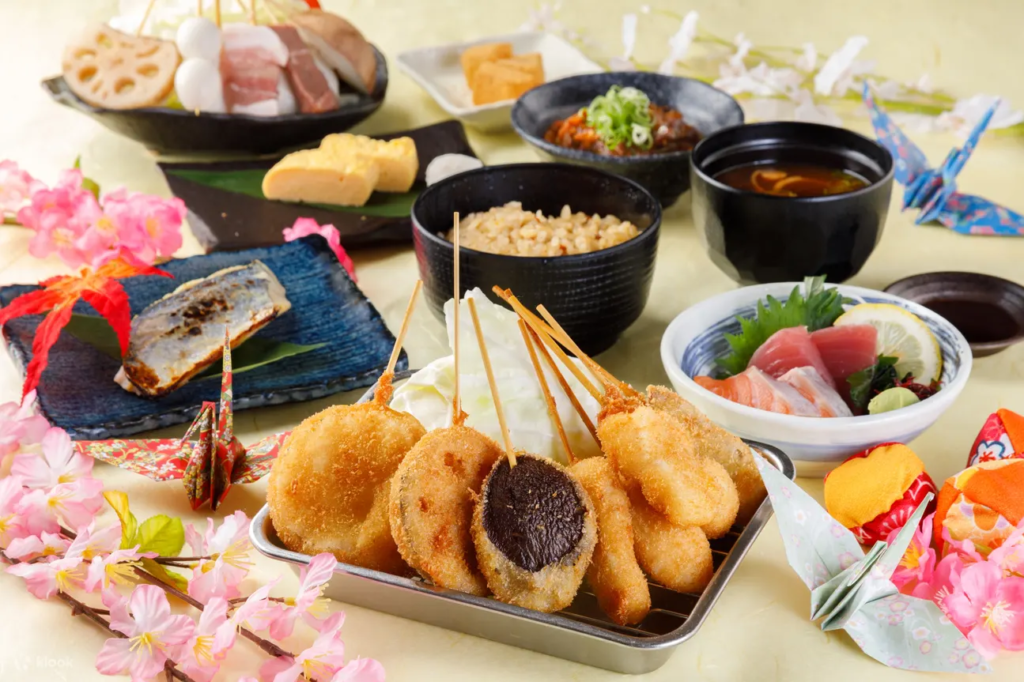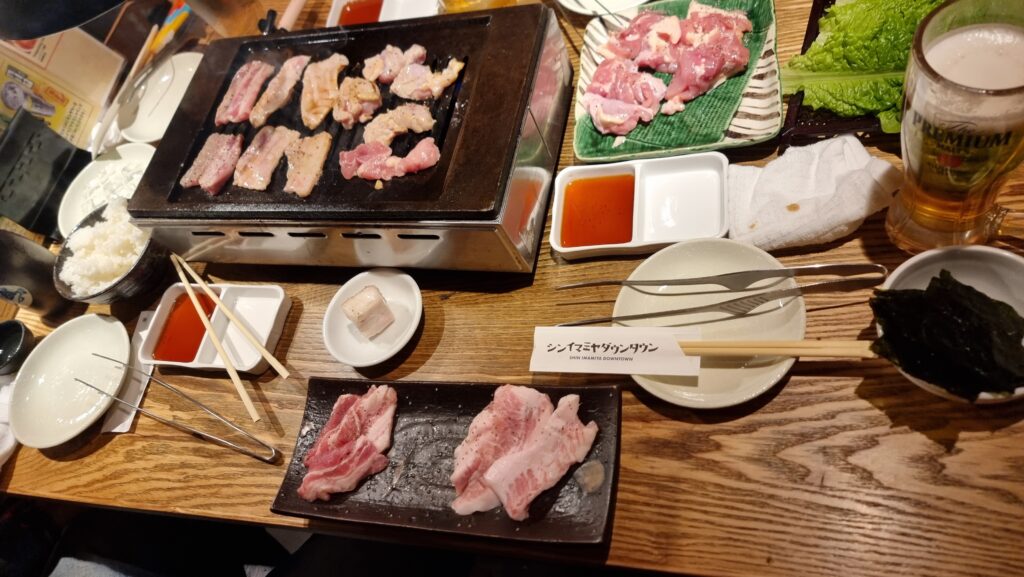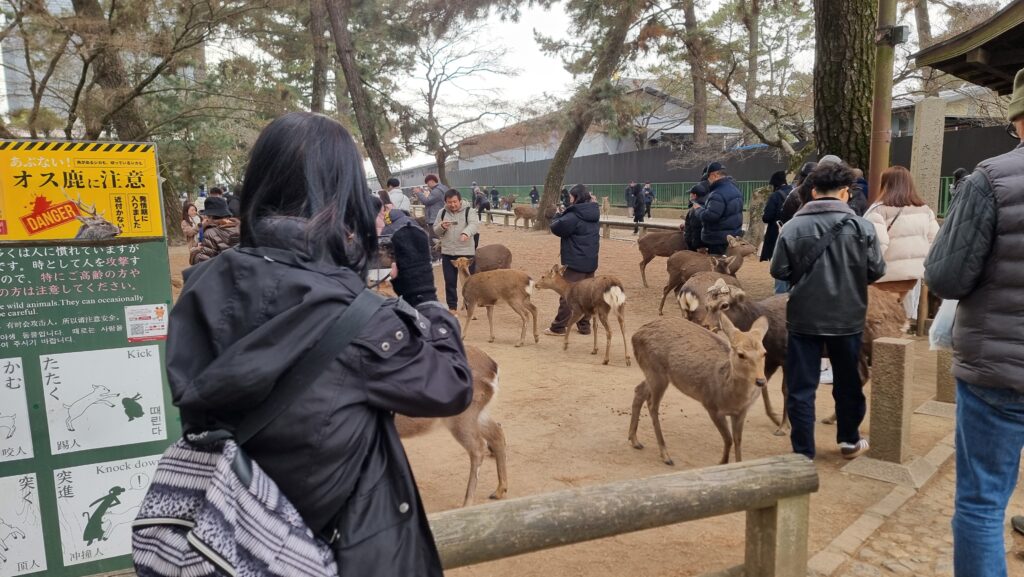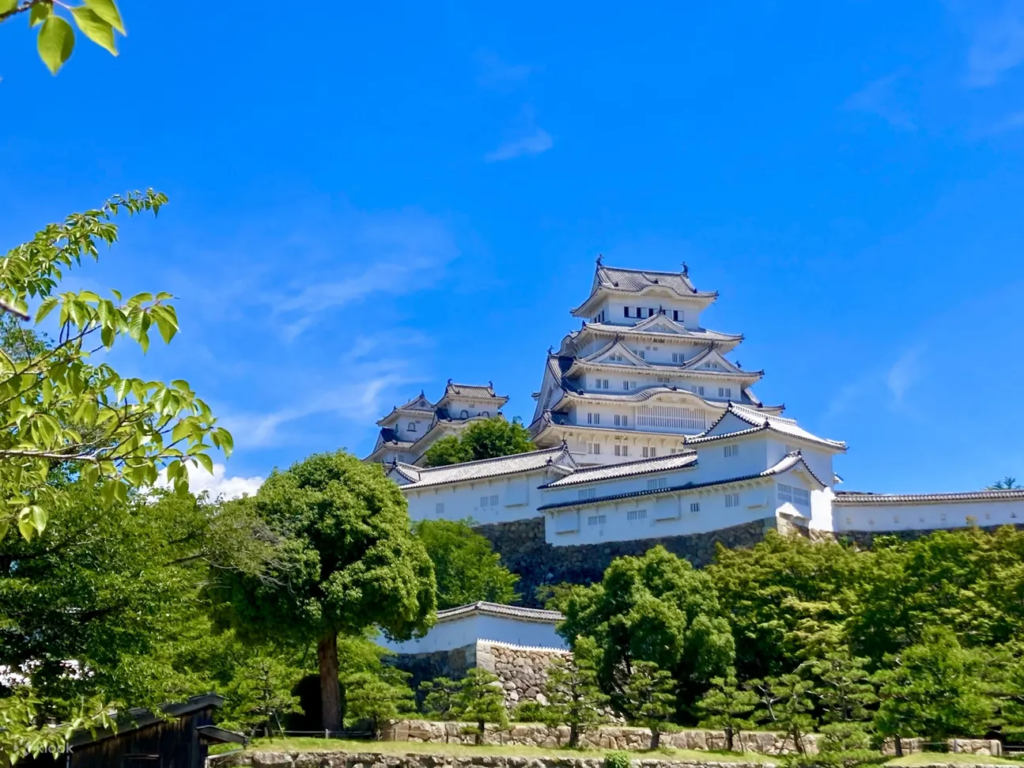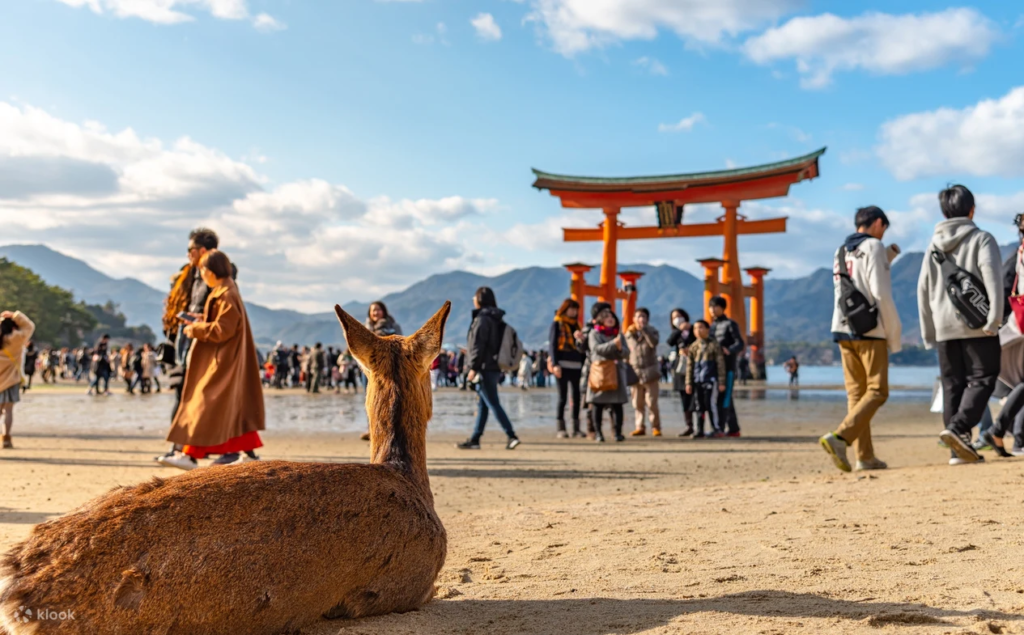Chapter 1 – Why Osaka Should Be on Your Next Japan Trip
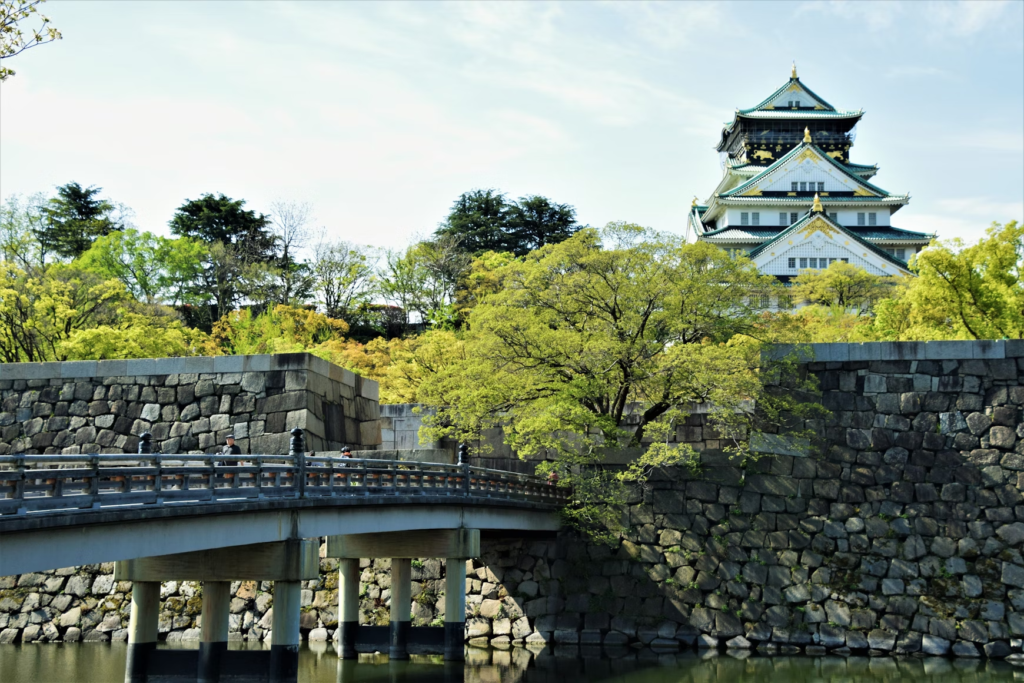
Osaka, Japan’s third-largest city, is a vibrant blend of ancient history, neon-lit nightlife, and mouthwatering street food. Known as “Japan’s Kitchen”, this energetic city offers an irresistible mix of cultural landmarks, shopping districts, theme parks, and culinary delights that will keep you busy from sunrise to well past midnight.
A City with a Personality
While Tokyo impresses with its polished modernity and Kyoto charms with serene temples, Osaka wins hearts with its warm, friendly locals and laid-back vibe. Osakans are known for their humor, directness, and love for good food — traits you’ll feel in every interaction, whether you’re chatting with a street vendor or asking for directions.
Food Capital of Japan

If there’s one thing you must do in Osaka, it’s eat. From sizzling okonomiyaki (savory pancakes) and golden kushikatsu (deep-fried skewers) to the famous takoyaki (octopus balls), the city is a paradise for food lovers. Street food isn’t just a snack here — it’s a cultural experience.
Easy Access to Kansai’s Best
Osaka is perfectly positioned as a gateway to the Kansai region. In under an hour, you can explore the historic streets of Kyoto, the friendly deer of Nara, or the picturesque harbor of Kobe. This makes Osaka the ideal base for day trips while enjoying its lively urban energy at night.
A Perfect Balance of Old and New
Wander through Osaka Castle’s sprawling grounds in the morning, shop for quirky souvenirs in Shinsaibashi by afternoon, and end your day under the neon glow of Dotonbori. The city embraces tradition and modern entertainment in equal measure, making every day an adventure.
Why Visit in 2025?
- Fresh Attractions – Universal Studios Japan is adding new seasonal events and themed rides.
- Cultural Festivals – Celebrate the lively Tenjin Matsuri or the colorful Osaka Castle Sakura Festival.
- Post-Pandemic Tourism Boost – Expect more English-friendly services, new hotel openings, and improved transportation links for international travelers.
In short: If you want a destination where every street is alive with flavor, history, and fun, Osaka in 2025 is calling your name.
Chapter 2 – Getting to Osaka
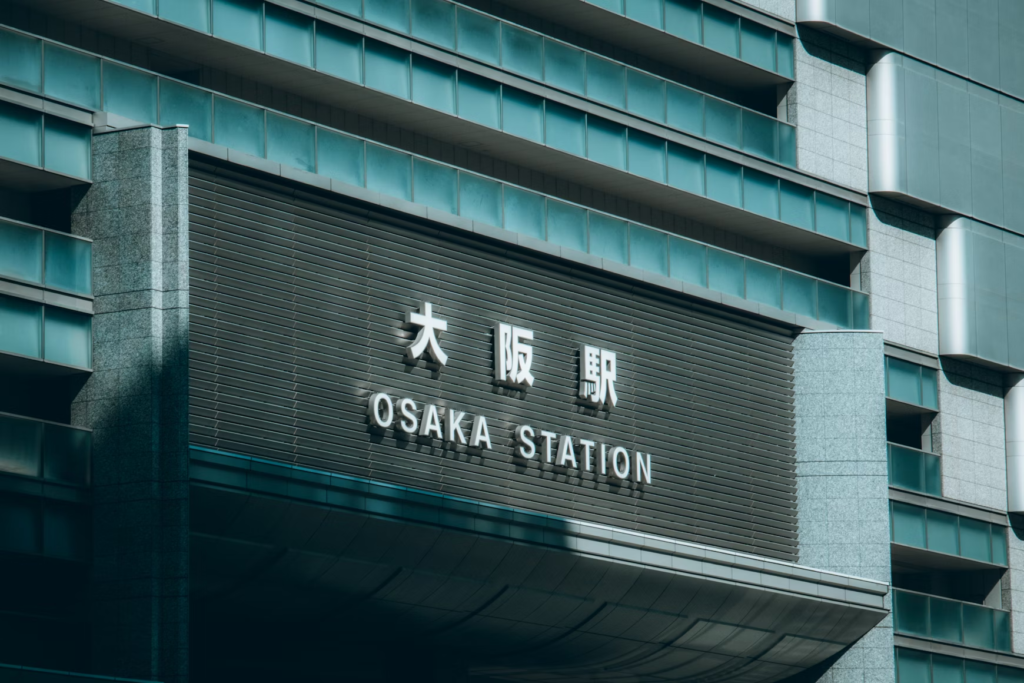
Osaka is one of Japan’s most well-connected cities, making it easy to reach, whether you’re flying in from abroad or traveling domestically. With two major airports, high-speed Shinkansen lines, and multiple bus and ferry options, you can choose the route that fits your schedule and budget.
2.1 By Air – Kansai International Airport (KIX)
Kansai International Airport (KIX) is the main gateway for international travelers visiting Osaka. Built on an artificial island in Osaka Bay, it offers excellent facilities, frequent transport links, and direct flights from major cities worldwide.
- International Flights: Direct services from Singapore, Bangkok, Sydney, London, Los Angeles, and more.
- Domestic Flights: Links to Sapporo, Fukuoka, Okinawa, and other Japanese cities.
- Transport to City Center:
- Nankai Airport Express: ~45 minutes to Namba Station
- JR Kansai Airport Rapid Service: ~65 minutes to Osaka Station
- Airport Limousine Buses: Connect to major hotels & districts
- Taxi / Private Transfer: ~50 minutes (most expensive option)
💡 Tip: Consider getting an ICOCA IC card at the airport for seamless travel on trains, buses, and subways.
2.2 By Air – Osaka International Airport (ITM)
Also known as Itami Airport, ITM handles mostly domestic flights. It’s closer to the city than KIX, making it convenient if you’re flying in from Tokyo, Hokkaido, or Kyushu.
- Travel Time to City:
- Limousine bus to Umeda or Namba: ~30 minutes
- Taxi: ~20–25 minutes
- Best For: Quick domestic connections and travelers who want minimal transit time after landing.
2.3 By Train – The Shinkansen & JR Lines
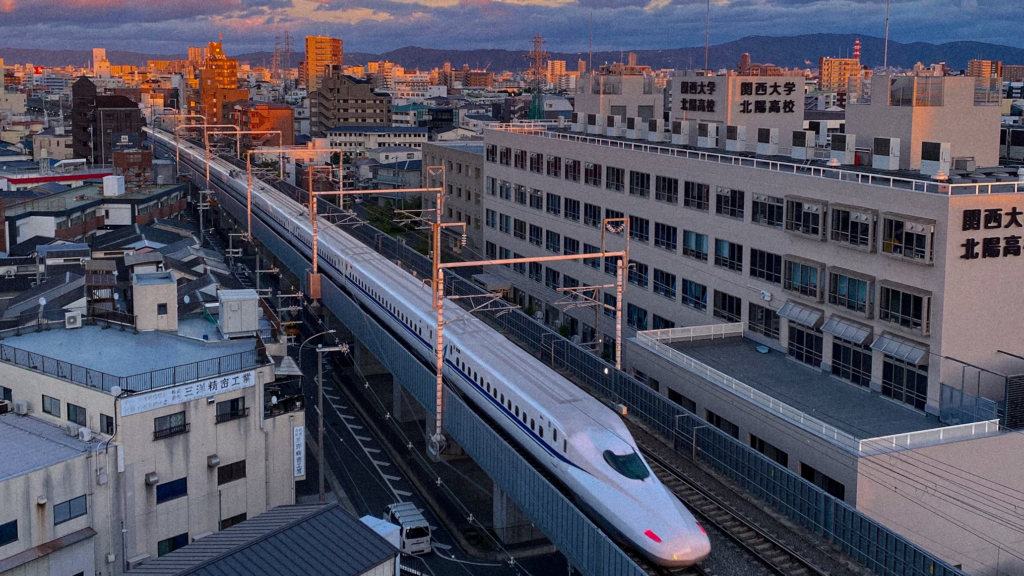
Osaka is a major stop on the Tokaido and Sanyo Shinkansen lines, which connect it to major Japanese cities.
- Tokyo → Osaka: ~2.5 hours via Nozomi (fastest service)
- Kyoto → Osaka: ~15 minutes via Shinkansen or JR Special Rapid Service
- Hiroshima → Osaka: ~1.5 hours via Shinkansen
- Arrival Station: Shin-Osaka Station (transfer to local JR or Osaka Metro lines)
💡 Tip: If you’re planning multiple train trips, get a Japan Rail Pass or the Kansai Area Pass to save money.
Klook.com2.4 By Highway Bus
For budget-conscious travelers, highway buses offer a slower but cheaper alternative to trains.
- Overnight buses from Tokyo take ~8 hours and cost significantly less than Shinkansen tickets.
- Comfortable “premium” buses with reclining seats are available for long rides.
2.5 By Ferry
Osaka’s ferry ports connect it to destinations like Shikoku, Kyushu, and even Busan (Korea).
- Osaka Nanko Port: Services to Kyushu (Kitakyushu, Kagoshima)
- Osaka International Ferry Terminal: Ferry to Busan via PanStar Cruise
2.6 Which Option is Best?
- Fastest: Shinkansen or direct flights to KIX/ITM
- Cheapest: Overnight highway buses
- Most Scenic: Ferry routes across Osaka Bay
In summary: Whether you arrive by sky, rail, road, or sea, Osaka welcomes you with easy access, efficient transport, and plenty of ways to start your adventure right after you land.
Chapter 3 – Getting Around Osaka Like a Local
Osaka is famous for its fast, reliable, and affordable public transport, making it easy for travelers to navigate like a pro. Whether you’re hopping between neon-lit districts, heading to Universal Studios Japan, or exploring hidden food alleys, there’s a convenient option for every trip.
3.1 Osaka Metro – The Easiest Way to Explore
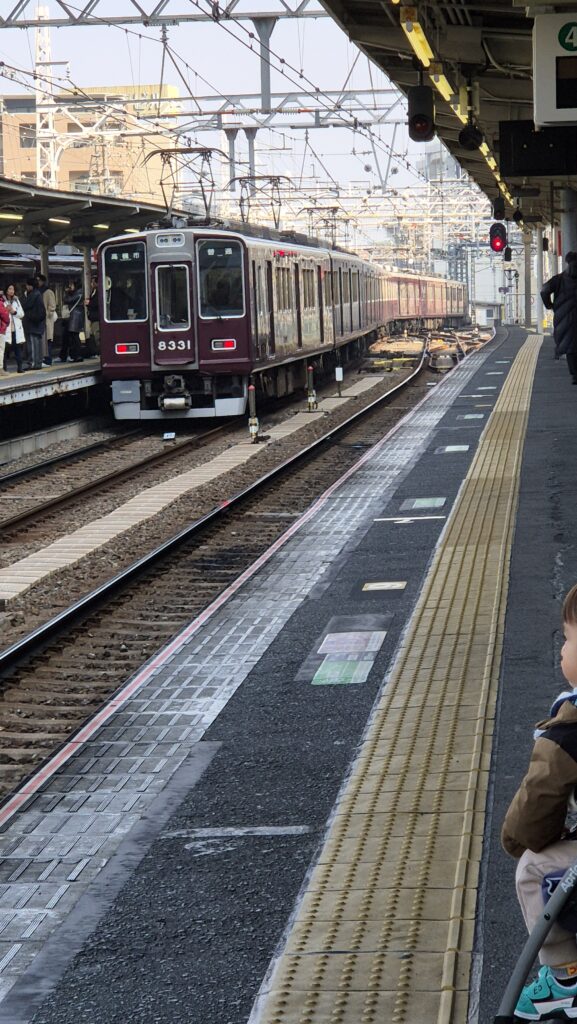
The Osaka Metro covers most major attractions, shopping streets, and entertainment districts.
- Popular Lines for Tourists:
- Midosuji Line (Red): Connects Shin-Osaka → Umeda → Namba → Tennoji
- Chuo Line (Green): Access to Osaka Castle & Osaka Bay Area
- Yotsubashi Line (Blue): Parallel to Midosuji, less crowded
- Fares: ¥180–¥370 per ride (distance-based)
- Passes:
- Osaka Metro 1-Day Pass – Unlimited rides for 1 day (~¥800)
- Osaka Amazing Pass – Includes unlimited rides + free entry to attractions
💡 Tip: Avoid rush hour (7:30–9:00 am and 5:30–7:30 pm) to skip packed trains.
3.2 JR Lines – For Short Regional Trips
JR West trains are perfect for reaching areas not covered by the metro, as well as nearby cities.
- JR Loop Line: Circles central Osaka, stopping at Osaka Castle, Tennoji, and Osaka Station
- Special Rapid Services: Quick links to Kyoto, Nara, Kobe
- Fares: From ¥140 within the city
3.3 IC Cards – Travel Made Simple
Get a rechargeable IC card like ICOCA, Suica, or Pasmo for tap-and-go payments on trains, buses, and even vending machines.
- Available at train stations & convenience stores
- Can be used all over Japan, not just in Osaka
3.4 Buses – Good for Specific Routes
While trains are faster, Osaka’s city buses cover areas the metro doesn’t.
- Flat Fare: ¥210 within central Osaka
- Great for reaching Osaka Bay Area attractions
3.5 Taxis & Ride-Hailing
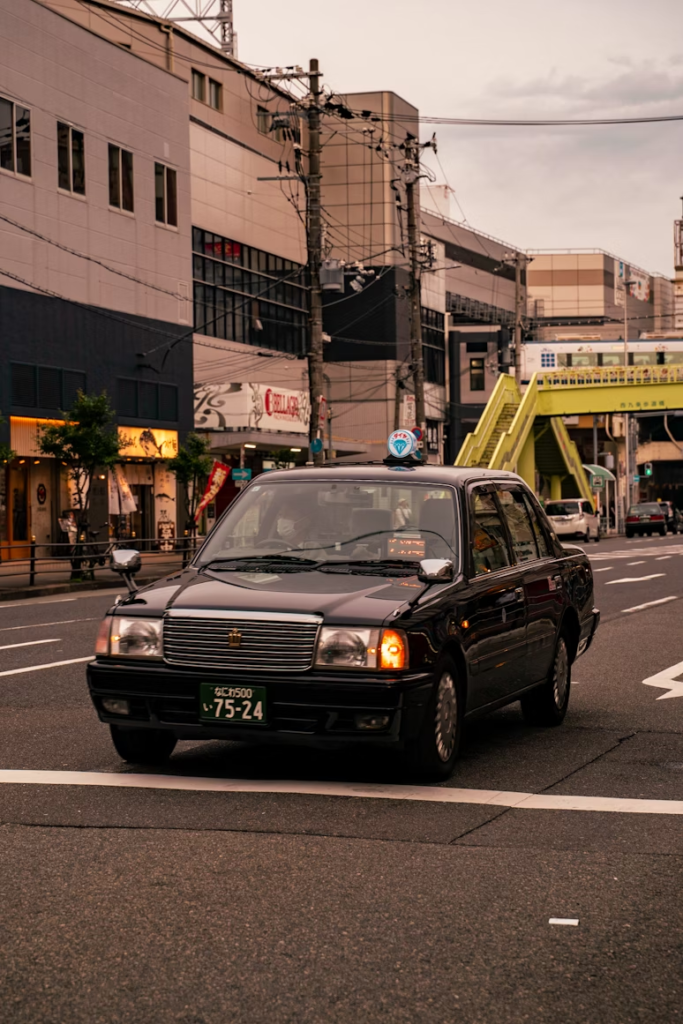
Taxis are clean, safe, and available 24/7 — but more expensive than public transport.
- Starting Fare: ~¥680
- Best For: Late-night returns, heavy luggage, or short trips in bad weather
- Ride-hailing apps like DiDi and JapanTaxi are widely used.
3.6 Biking & Walking
Osaka is bike-friendly and relatively flat, making cycling a pleasant option.
- Bike Rentals: ~¥1,000/day
- Walking: Many tourist areas (like Dotonbori & Shinsaibashi) are best explored on foot.
3.7 Transport Passes That Save You Money
- Osaka Amazing Pass: Unlimited metro & bus rides + 50+ attractions included
- Kansai Thru Pass: Covers Osaka, Kyoto, Kobe, Nara & Wakayama (non-JR trains & buses)
- JR Kansai Area Pass: Best for Shinkansen & JR line trips in Kansai
In summary: The best way to get around Osaka is to combine the metro for city travel, JR trains for short regional hops, and walking for sightseeing districts. With a good IC card or travel pass, you’ll save time, money, and effort — just like a local.
Chapter 4 – Best Time to Visit Osaka in 2025
Osaka is a year-round destination, but your experience will vary depending on the season. From cherry blossoms in spring to vivid autumn leaves, each time of year offers unique festivals, flavors, and scenery.
4.1 Spring (March – May) – Cherry Blossoms & Pleasant Weather 🌸
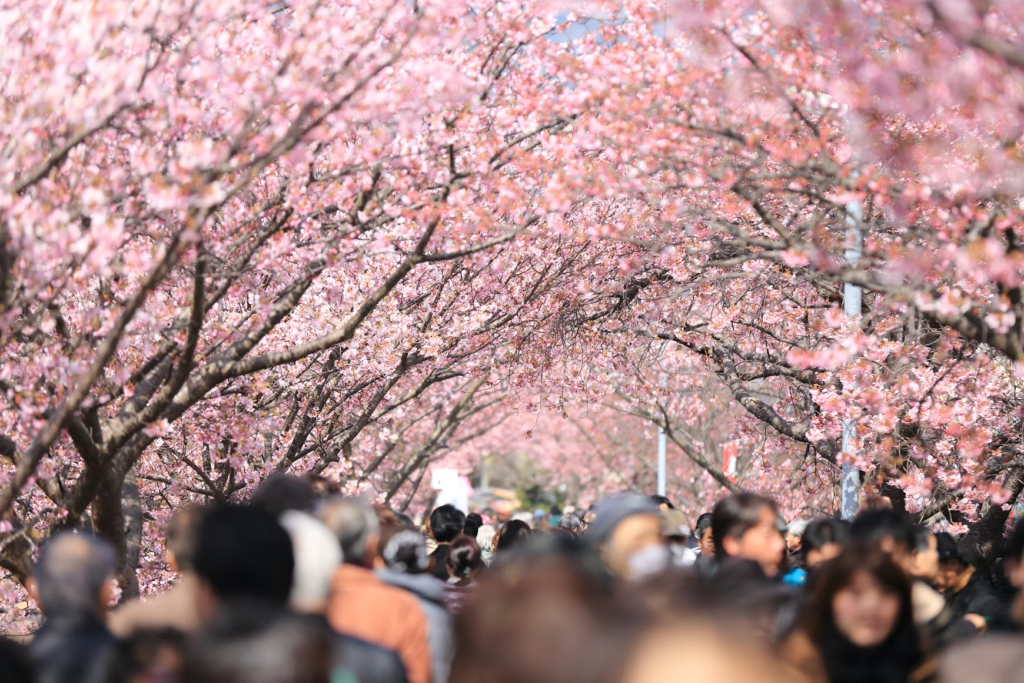
- Weather: Mild temperatures (10°C–22°C) and low humidity
- Highlights:
- Cherry blossoms at Osaka Castle Park & Kema Sakuranomiya Park
- Plum blossoms in early March at Osaka Castle’s plum grove
- Street food festivals in Namba & Tennoji
- Festivals:
- Osaka Castle Sakura Festival (late March–early April)
- Sumiyoshi Taisha Spring Festival (April)
- Why Visit: Comfortable weather and stunning seasonal scenery make spring the most popular time for first-time visitors.
💡 Tip: Book hotels months in advance — cherry blossom season is peak tourism.
4.2 Summer (June – August) – Festivals & Nightlife Energy 🎆
- Weather: Hot and humid (25°C–35°C), occasional rain in June
- Highlights:
- Late-night street food runs in Dotonbori
- Fireworks displays along the rivers
- Festivals:
- Tenjin Matsuri (July) – One of Japan’s top three festivals, with river processions & fireworks
- Naniwa Yodogawa Fireworks Festival (August)
- Why Visit: If you love traditional matsuri (festivals) and vibrant nightlife, summer is unforgettable — just be ready for the heat.
💡 Tip: Stay hydrated and plan indoor attractions during midday.
4.3 Autumn (September – November) – Crisp Air & Colorful Leaves 🍁
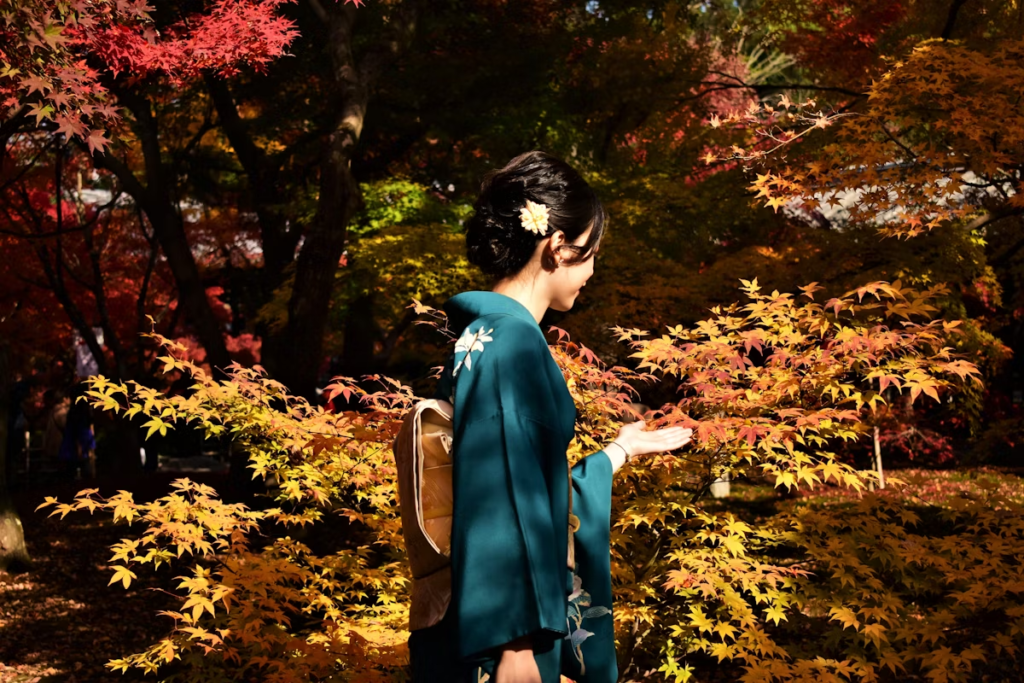
- Weather: Cool and comfortable (15°C–25°C)
- Highlights:
- Fiery red maple leaves at Minoo Park and Osaka Castle
- Seasonal food like roasted chestnuts and matsutake mushrooms
- Festivals:
- Osaka Marathon (late November)
- Shitennoji Wasso historical parade (November)
- Why Visit: Fewer crowds than spring, perfect walking weather, and spectacular autumn foliage.
4.4 Winter (December – February) – Illuminations & Cozy Eats ❄️
- Weather: Chilly but mild compared to northern Japan (5°C–12°C)
- Highlights:
- Osaka Hikari Renaissance light-up events in December
- Warm comfort foods like hot pot (nabe) and oden
- Festivals:
- Christmas Markets in Umeda & Namba
- Hatsumode (New Year shrine visit) at Sumiyoshi Taisha
- Why Visit: Low hotel rates, beautiful winter illuminations, and hearty winter dishes.
💡 Tip: Pack layers — Osaka winters are windy, especially near the bay.
4.5 Month-by-Month Quick Guide
| Month | Weather | Highlight | Crowds |
|---|---|---|---|
| Jan | Cool, dry | New Year celebrations | Low |
| Feb | Chilly | Winter sales shopping | Low |
| Mar | Mild | Plum & early cherry blossoms | Medium |
| Apr | Warm | Peak sakura season | High |
| May | Sunny | Outdoor markets & events | Medium |
| Jun | Rainy | Hydrangea blooms | Medium |
| Jul | Hot | Tenjin Matsuri | High |
| Aug | Very hot | Fireworks festivals | High |
| Sep | Warm | Early autumn leaves | Medium |
| Oct | Cool | Peak foliage in Minoo | Medium |
| Nov | Crisp | Autumn colors & marathon | Medium |
| Dec | Cold | Winter illuminations | Low |
In summary:
- Best for First-Timers: Spring (Mar–May) & Autumn (Oct–Nov)
- Best for Festivals: Summer (Jul–Aug)
- Best for Budget Travel: Winter (Dec–Feb)
Chapter 5 – Where to Stay in Osaka
Osaka offers a huge range of accommodations — from luxury hotels with skyline views to budget-friendly hostels near bustling food streets. The best place to stay depends on your budget, itinerary, and how you want to experience the city.
5.1 Best Neighborhoods for Tourists
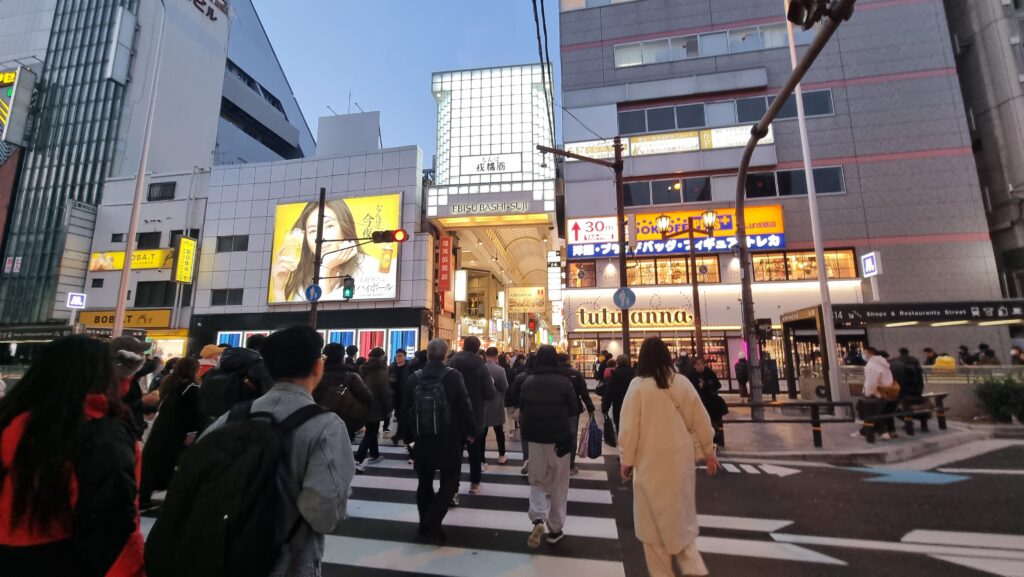
Namba – Best for First-Time Visitors
- Why Stay Here: Right in the heart of Osaka’s entertainment and food scene. Easy access to Dotonbori, Shinsaibashi, and Kuromon Ichiba Market.
- Transport: Namba Station connects to multiple metro lines, JR trains, and the airport express.
- Best For: Food lovers, nightlife seekers, and short stays.
💡 Tip: Book early — Namba hotels sell out fast during festivals and cherry blossom season.
Umeda – Best for Shopping & Transport

- Why Stay Here: Osaka’s main business district, full of shopping malls, department stores, and direct Shinkansen access from Shin-Osaka nearby.
- Transport: Umeda/Osaka Station hub for JR, metro, and buses.
- Best For: Travelers who want a central location for day trips to Kyoto, Nara, and Kobe.
Shin-Osaka – Best for Quick Rail Access
- Why Stay Here: Perfect if you’re using the Shinkansen for multiple-day trips or moving between cities.
- Transport: Direct bullet train connections plus metro to Namba and Umeda.
- Best For: Rail pass holders and business travelers.
Tennoji – Best for Budget & Local Vibes
- Why Stay Here: Less touristy, with cheaper accommodations, street markets, and cultural attractions like Shitennoji Temple.
- Transport: JR Loop Line and metro connections to all major districts.
- Best For: Budget travelers and those wanting a more local experience.
Osaka Bay Area – Best for Families & Theme Parks
- Why Stay Here: Close to Universal Studios Japan, Osaka Aquarium, and waterfront attractions.
- Transport: Chuo Line for quick trips to the city center.
- Best For: Families, theme park fans, and travelers who prefer a quieter base.
5.2 Recommended Hotels by Budget
Luxury (¥25,000+/night)
- The Ritz-Carlton Osaka (Umeda): Elegant European-style luxury with fine dining.
- Conrad Osaka (Umeda): Stunning views from the 40th floor and up.
Mid-Range (¥10,000–¥25,000/night)
- Cross Hotel Osaka (Namba): Stylish rooms steps away from Dotonbori.
- Hotel Monterey Grasmere Osaka (Namba): Great location with direct station access.
Budget (<¥10,000/night)
- Khaosan World Namba: Modern hostel with private and dorm options.
- APA Hotel Osaka Higobashi-Ekimae: Compact but comfortable rooms near Umeda.
5.3 Accommodation Tips
- Book Early in Peak Seasons: March–April (sakura) and October–November (autumn leaves) fill up fast.
- Check for Pass Discounts: Some hotels offer free Osaka Amazing Passes for guests.
- Consider Capsule Hotels: Great for solo travelers and short stays, offering privacy at low cost.
In summary:
- For First-Time Visitors: Namba
- For Day Trips: Umeda or Shin-Osaka
- For Budget: Tennoji
- For Families: Osaka Bay Area
Chapter 6 – Top Attractions You Can’t Miss
Osaka is a city that mixes historic landmarks, quirky neighborhoods, and world-class entertainment. Whether you’re into castles, theme parks, or neon-lit food streets, there’s something here that will make your trip unforgettable.
6.1 Osaka Castle (Osaka-jo) 🏯
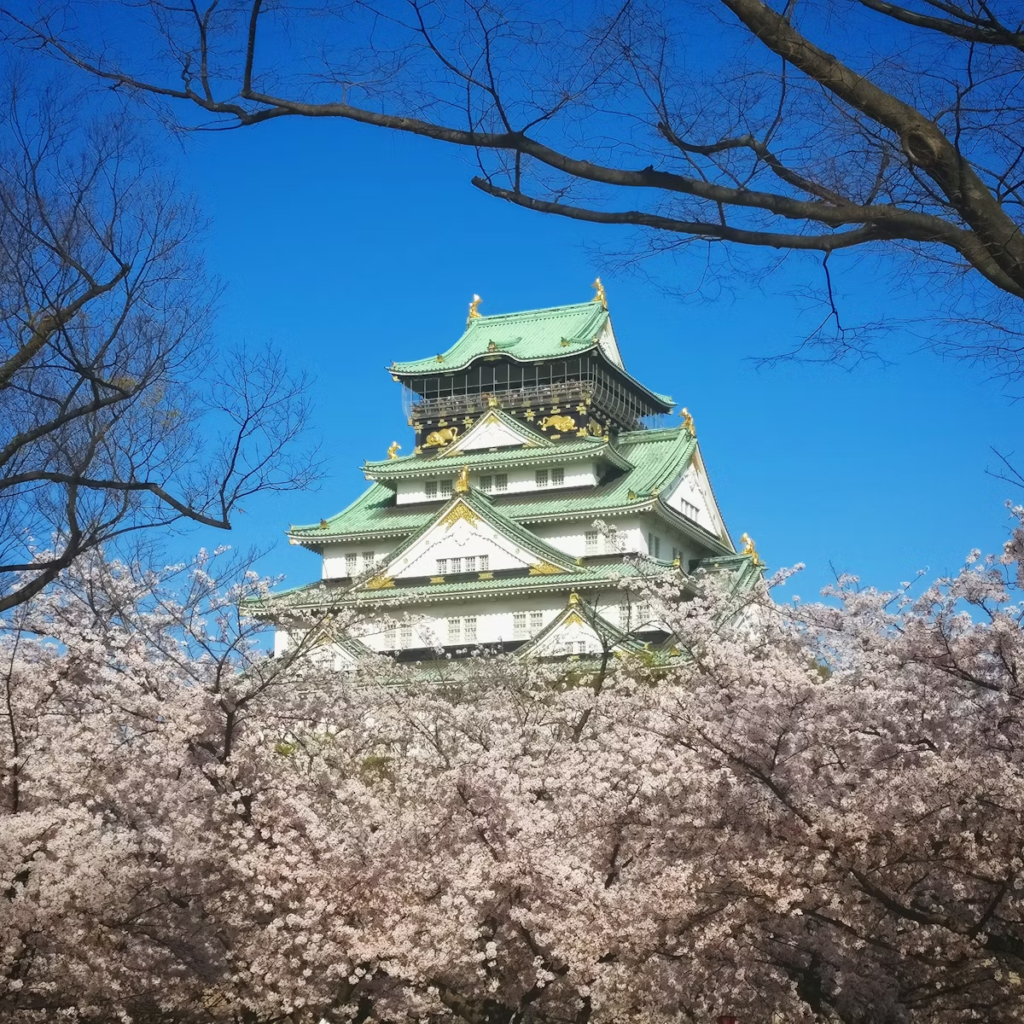
- Why Visit: Osaka’s most famous landmark, originally built in 1583, is surrounded by sprawling parklands that are especially beautiful in the spring cherry blossom season.
- Don’t Miss: The observation deck for panoramic city views and the museum detailing the castle’s history.
- Best Time: Late March to early April for sakura, or late November for autumn colors.
6.2 Dotonbori & Shinsaibashi 🌃🍜
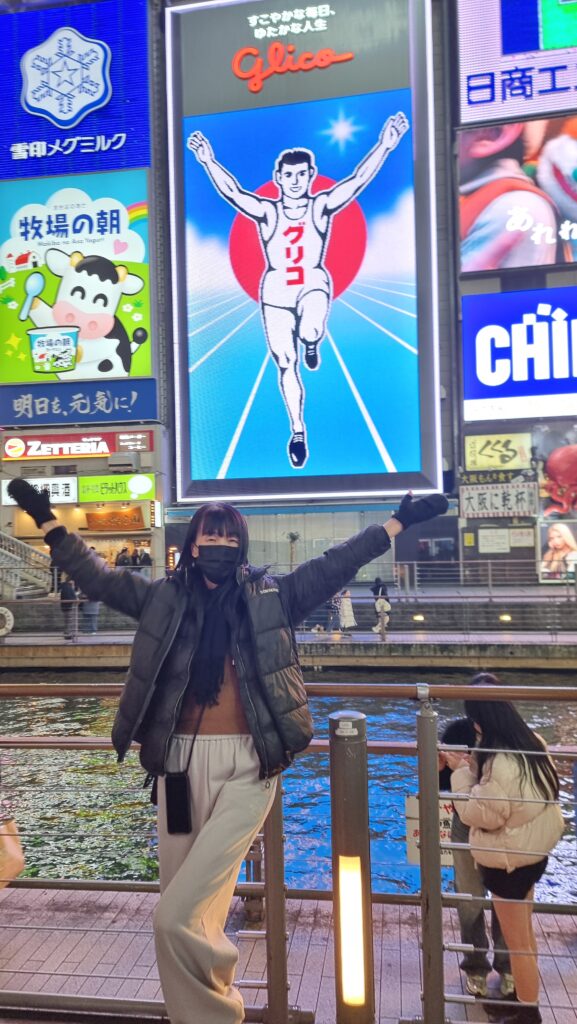
- Why Visit: The heart of Osaka’s nightlife and street food culture. Known for its giant neon signs, including the iconic Glico Running Man.
- Don’t Miss:
- Takoyaki and okonomiyaki from street stalls
- Nighttime riverwalk along the Dotonbori Canal
- Best Time: Evening for full neon glow and bustling atmosphere.
6.3 Tsutenkaku Tower & Shinsekai 🗼
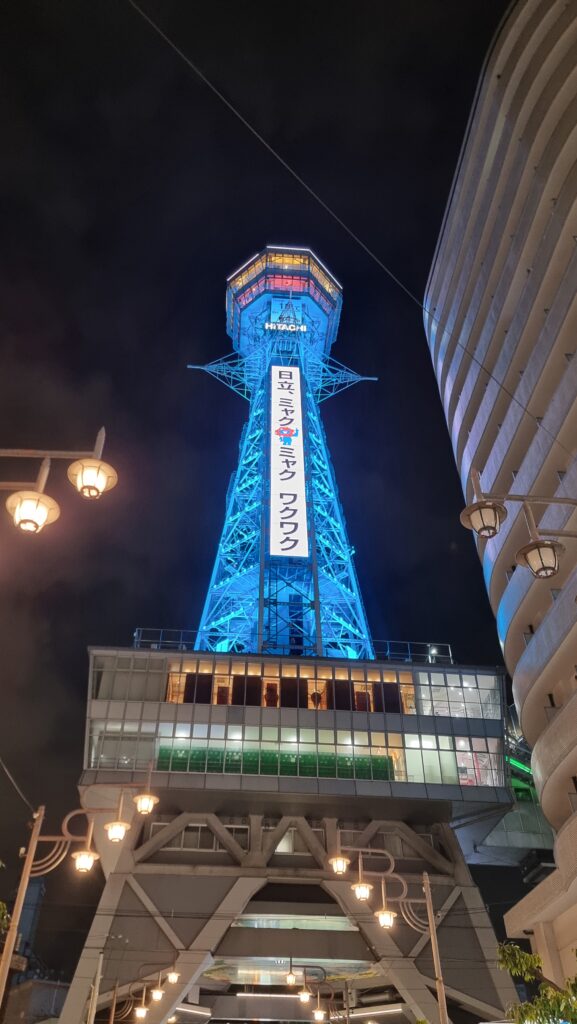
- Why Visit: A retro district with old-school charm, colorful signboards, and the nostalgic Tsutenkaku observation tower.
- Don’t Miss: Sampling kushikatsu (deep-fried skewers) from one of the many local eateries.
- Best Time: Afternoon or evening for a lively vibe.
6.4 Universal Studios Japan (USJ) 🎢🎬

- Why Visit: One of Japan’s most popular theme parks, home to Super Nintendo World, The Wizarding World of Harry Potter, and seasonal events.
- Don’t Miss: Mario Kart ride in Super Nintendo World, Butterbeer in Hogsmeade, and Halloween Horror Nights (autumn).
- Best Time: Weekdays to avoid crowds, or evenings for special shows.
6.5 Kuromon Ichiba Market 🐟🍡

- Why Visit: A paradise for food lovers with over 150 stalls selling fresh seafood, wagyu beef skewers, seasonal fruits, and Osaka street snacks.
- Don’t Miss: Grilled scallops, fresh sushi, and sweet Japanese strawberries.
- Best Time: Morning to noon for the freshest selections.
6.6 Umeda Sky Building 🌇
- Why Visit: Architectural icon with a floating garden observatory offering breathtaking city sunsets.
- Don’t Miss: Visit the basement’s retro-style Takimi Koji alley for old-fashioned Japanese dining.
6.7 Osaka Aquarium Kaiyukan 🐠
- Why Visit: One of the largest aquariums in the world, featuring whale sharks, manta rays, and immersive marine exhibits.
- Don’t Miss: Nighttime illuminations and penguin feeding sessions.
6.8 Sumiyoshi Taisha Shrine ⛩️
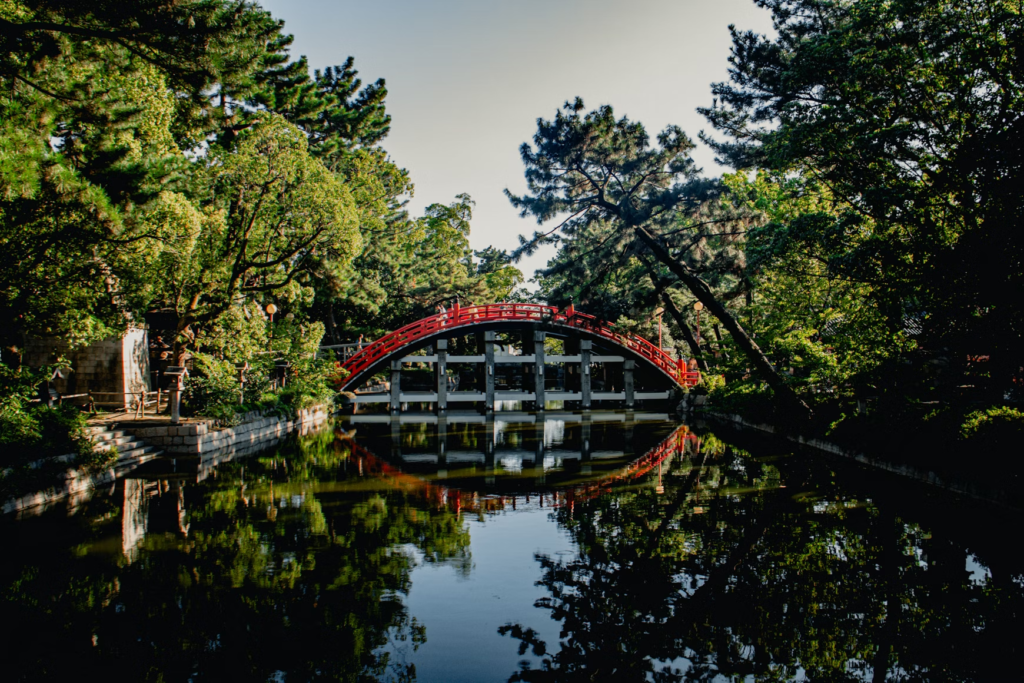
- Why Visit: One of Japan’s oldest Shinto shrines, famous for its unique straight bridge (Sorihashi) and peaceful grounds.
- Best Time: Early morning for a serene atmosphere.
6.9 America-Mura (American Village) 🎨
- Why Visit: Osaka’s youth culture hub with street art, vintage shops, and quirky cafes.
- Don’t Miss: Giant street murals and unique thrift store finds.
6.10 Minoo Park 🍁
- Why Visit: A scenic nature escape just 30 minutes from the city center, with a beautiful waterfall and vibrant autumn foliage.
- Don’t Miss: Momiji tempura – deep-fried maple leaves, a local specialty.
In summary:
From historic Osaka Castle to the high-energy streets of Dotonbori and the thrilling rides at Universal Studios Japan, the city offers an incredible mix of tradition, modern entertainment, and unforgettable food experiences.
Chapter 7 – Osaka’s Must-Try Foods
If Tokyo is Japan’s political capital, Osaka is without a doubt its food capital. Nicknamed “Japan’s Kitchen”, the city has a long history of creating comforting, affordable, and flavor-packed dishes. From sizzling street snacks to hearty local specialties, eating in Osaka is more than a meal — it’s a cultural experience.
7.1 Takoyaki – The Iconic Osaka Snack 🐙
- What It Is: Round, golden-brown balls made from batter, filled with diced octopus, pickled ginger, and green onions.
- Where to Try:
- Aizuya (Namba) – Believed to be the birthplace of takoyaki.
- Takoyaki Wanaka (Dotonbori) – Crispy outside, creamy inside.
- Best Time: Evening stroll through Dotonbori’s food stalls.
7.2 Okonomiyaki – Savory Pancake Perfection 🥢
- What It Is: A griddled savory pancake made from batter, shredded cabbage, meat or seafood, topped with sweet sauce, mayonnaise, and bonito flakes.
- Where to Try:
- Botejyu Okonomiyaki (Dotonbori) – Famous for its tender, fluffy okonomiyaki.
- Chibo (Shinsaibashi) – Great variety of fillings.
- Fun Fact: “Okonomi” means “as you like it,” so you can customize the fillings.
7.3 Kushikatsu – Deep-Fried Happiness 🍢
- What It Is: Skewers of meat, seafood, or vegetables, coated in breadcrumbs and fried until golden.
- Where to Try:
- Daruma (Shinsekai) – A legendary kushikatsu chain.
- Nihonichinokushikatsu – Fine breadcrumbs, light and crispy texture, and served with homemade sauce
- Rule: No double-dipping into the communal sauce.
7.4 Kitsune Udon – Comfort in a Bowl 🍜

- What It Is: Thick udon noodles in a light soy-based broth, topped with sweet fried tofu (aburaage).
- Where to Try:
- Usami-tei Matsubaya (Shinsaibashi) – Serving kitsune udon since 1893.
- Fun Fact: “Kitsune” means fox — legend says foxes love fried tofu.
7.5 Yakiniku – Osaka’s Grilled Meat Culture 🥩
- What It Is: Japanese-style BBQ where diners grill their own meat at the table.
- Where to Try:
- Matsusaka Yakiniku M – Premium wagyu experience.
- Yakinikuya Daibokujo – All you can eat Yakiniku, Tanimaqi Branch in Osaka
- Best For: Groups and meat lovers.
7.6 Fugu – The Famous Pufferfish Dish 🐡

- What It Is: Delicacy prepared from pufferfish, served raw as sashimi or in a hot pot.
- Where to Try:
- Zuboraya (Shinsekai) – Iconic Osaka fugu restaurant.
- Note: Only licensed chefs can prepare fugu safely.
7.7 Horumon – Osaka’s Offal Specialty 🍲
- What It Is: Grilled or stir-fried beef and pork offal, a bold-flavored local favorite.
- Where to Try:
- Horumon Dojo (Tennoji) – Known for its sizzling platters.
7.8 Street Food & Markets 🏮
Don’t just stick to restaurants — Osaka’s food culture thrives in markets and street alleys.
- Kuromon Ichiba Market: Fresh seafood, grilled skewers, seasonal fruits.
- Hozenji Yokocho Alley: Lantern-lit street with traditional eateries.
In summary:
Eating in Osaka is about bold flavors, friendly atmosphere, and variety. Whether it’s a skewer of crispy kushikatsu or a plate of fluffy okonomiyaki, you’ll taste the city’s passion for good food in every bite.
Chapter 8 – Shopping in Osaka
From glittering department stores to quirky street markets, Osaka is a shopper’s dream where tradition meets trend. Whether you’re looking for high-fashion brands, unique souvenirs, or bargain finds, the city offers a variety of shopping districts and experiences that suit every style and budget.
1. Shinsaibashi Shopping Arcade (心斎橋筋商店街)
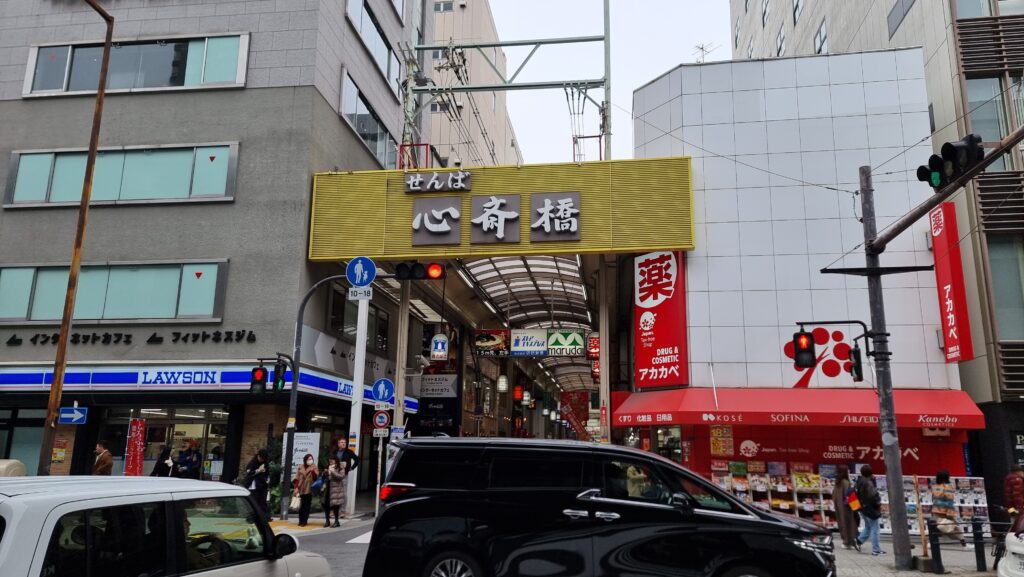
- Why Go: Osaka’s most famous shopping street, stretching nearly 600 meters.
- What to Expect: International fashion brands, Japanese specialty stores, cosmetics shops, and hidden cafés.
- Tip: Visit in the morning to avoid heavy crowds, or in the evening when the atmosphere is lively.
2. Namba Parks

- Why Go: A unique shopping complex with a cascading rooftop garden.
- What to Expect: Fashion boutiques, dining spots, and seasonal events — plus Instagram-worthy architecture.
- Tip: Head to the rooftop at sunset for panoramic city views.
3. Nipponbashi Den Den Town (日本橋でんでんタウン)
- Why Go: Osaka’s answer to Tokyo’s Akihabara for electronics, anime, and gaming culture.
- What to Expect: Manga shops, collectible figurines, and retro video game stores.
- Tip: Look for tax-free shopping deals if you’re buying big-ticket electronics.
4. Kuromon Ichiba Market (黒門市場)
- Why Go: Known as “Osaka’s Kitchen,” this market is perfect for foodies and those looking for local ingredients.
- What to Expect: Fresh seafood, seasonal fruits, street food stalls, and kitchenware.
- Tip: Try the grilled scallops and wagyu skewers while you shop.
5. Umeda & Grand Front Osaka
- Why Go: A polished shopping district with luxury brands, department stores, and gourmet food halls.
- What to Expect: Hankyu and Hanshin Department Stores, plus the massive Yodobashi Camera for electronics.
- Tip: Great spot for last-minute shopping before heading to Kansai Airport.
✅ Quick Shopping Tips:
- Many stores offer tax-free shopping for purchases over a certain amount — bring your passport.
- If you love Japanese stationery, look for Loft, Tokyu Hands, or Itoya.
- Bring a reusable shopping bag — some stores charge for plastic bags.
Chapter 9 – Best Day Trips from Osaka
Osaka’s prime location in the Kansai region makes it the perfect base for exploring Japan’s cultural treasures, scenic escapes, and historical wonders. With efficient train and bus connections, you can reach world-famous sites in under two hours, making day trips easy and rewarding.
1. Kyoto – Timeless Temples & Traditional Streets
- Travel Time: ~15–30 minutes by JR or private railway
- Highlights:
- Kinkaku-ji (Golden Pavilion) – A shimmering Zen temple surrounded by a mirror-like pond.
- Fushimi Inari Taisha – Thousands of iconic vermilion torii gates winding up the mountain.
- Gion District – Historic streets where you may spot a geisha.
- Tip: Start early to cover more sights and avoid peak crowds.
2. Nara – Ancient Capital & Friendly Deer
- Travel Time: ~45 minutes by JR or Kintetsu Line
- Highlights:
- Todai-ji Temple – Houses the world’s largest bronze Buddha.
- Nara Park – Famous for its free-roaming deer.
- Kasuga Taisha Shrine – Adorned with hundreds of stone and bronze lanterns.
- Tip: Deer biscuits (shika senbei) are available for feeding — but be ready for some pushy deer!
3. Kobe – Harbor City with Gourmet Delights
- Travel Time: ~30 minutes by JR or Hanshin Line
- Highlights:
- Kobe Harborland – Shopping, dining, and waterfront views.
- Mount Rokko – Panoramic views over the city and Osaka Bay.
- Kobe Beef – World-famous marbled beef that is worth the splurge.
- Tip: Evening visits offer romantic harbor nightscapes.
4. Himeji – Japan’s Most Beautiful Castle
- Travel Time: ~1 hour by Shinkansen or JR Special Rapid
- Highlights:
- Himeji Castle – UNESCO-listed, known as the “White Heron Castle” for its elegance.
- Koko-en Garden – Traditional landscaped gardens beside the castle.
- Tip: Combine with a visit to nearby Mount Shosha for hiking and temple views.
5. Wakayama – Temples, Nature & Seafood
- Travel Time: ~1 hour 15 minutes by JR
- Highlights:
- Wakayama Castle – Hilltop fortress with panoramic views.
- Kimiidera Temple – Famous for cherry blossoms in spring.
- Kuroshio Market – Tuna-cutting shows and fresh sushi.
- Tip: Best for travelers who want a mix of history and coastal charm.
6. Hiroshima & Miyajima (For the Early Riser)
- Travel Time: ~1.5 hours by Shinkansen to Hiroshima + ferry to Miyajima
- Highlights:
- Hiroshima Peace Memorial Park – Thought-provoking history and museums.
- Itsukushima Shrine – Iconic floating torii gate on Miyajima Island.
- Tip: Pack light for a long day — and check ferry schedules in advance.
✅ Day Trip Tips from Osaka:
- Use a JR Pass or regional rail pass for cost savings if making multiple trips.
- Start early — especially for destinations like Hiroshima or Miyajima.
- Wear comfortable shoes; most destinations involve a lot of walking.
Chapter 10 – Osaka Travel Tips & Safety
Osaka is widely regarded as one of Japan’s friendliest and safest cities, but smart planning can make your visit even more enjoyable. From navigating public transport to cultural etiquette and emergency contacts, this chapter covers essential tips every traveler should know before exploring Japan’s Kitchen.
10.1 General Safety in Osaka
- Osaka is very safe for solo travelers, families, and night outings. Violent crime is rare, and petty theft is uncommon compared to many global cities.
- Common sense applies: keep an eye on belongings in crowded areas like Dotonbori and train stations.
- Emergency number for police: 110
- Emergency number for ambulance/fire: 119
10.2 Health & Hygiene Tips
- Japan has excellent healthcare standards. Pharmacies and convenience stores carry common medicines, but bring your own for chronic conditions.
- Tap water in Osaka is safe to drink.
- During flu season or COVID-19 waves, wearing a mask in crowded places is polite and common.
10.3 Transportation Tips
- Purchase an ICOCA card for easy tap-and-go access to trains, buses, and subways — saves time and hassle.
- Trains and metros can get crowded during rush hours (7:30–9:00 am and 5:30–7:30 pm), so plan accordingly.
- Taxis are reliable but expensive — use only licensed taxis and confirm the meter is running.
- Signage in major stations is in English and Japanese, but download apps like Google Maps or Hyperdia for navigation help.
10.4 Cultural Etiquette

- Bowing is a common greeting — a slight bow or nod is appreciated but not mandatory.
- When entering homes, temples, or some traditional restaurants, remove your shoes at the door.
- Avoid talking loudly on public transport; keep phone calls to a minimum.
- Don’t tip — service charges are included and tipping is not customary.
10.5 Money & Payment Tips
- Japan is still largely cash-based, especially in small shops and markets, so carry sufficient yen.
- ATMs that accept international cards are common in convenience stores like 7-Eleven and post offices.
- Credit cards are widely accepted in larger stores, hotels, and restaurants.
10.6 Language Tips
- English signage is common in tourist areas, but not everywhere.
- Learn basic Japanese phrases like:
- Arigatou (Thank you)
- Sumimasen (Excuse me / Sorry)
- Kore wa ikura desu ka? (How much is this?)
- Translation apps like Google Translate can be invaluable.
10.7 Connectivity & Internet
- Rent a pocket Wi-Fi or buy a local SIM card at the airport for seamless internet access.
- Many cafes, hotels, and public spaces offer free Wi-Fi, but coverage may vary.
10.8 Emergency & Medical Services
- Hospitals and clinics in Osaka have English-speaking staff at major locations — ask your hotel concierge for recommendations.
- In emergencies, call 119 for ambulance or fire services.
- Pharmacy staff can often provide basic medical advice and over-the-counter medication.
In summary:
Osaka is a welcoming, safe city with a traveler-friendly infrastructure. With a bit of preparation — carrying cash, respecting local customs, and having handy apps — you’ll be ready to enjoy everything this dynamic city has to offer with peace of mind.
Chapter 11 – Travel Tips & Local Etiquette
Traveling in Osaka offers a rich cultural experience, but understanding local customs and etiquette will help you connect better with the city and its people. This chapter shares key tips and manners to ensure your visit is smooth, respectful, and memorable.
11.1 Essential Travel Tips for Osaka
- Plan Ahead: Many popular restaurants and attractions require reservations, especially during peak seasons. Book early to avoid disappointment.
- Use IC Cards: Purchase an ICOCA or similar IC card for convenient travel on trains, buses, and subways without buying individual tickets.
- Carry Cash: While credit cards are widely accepted, some smaller shops and eateries prefer cash. ATMs in convenience stores are traveler-friendly.
- Learn Basic Japanese Phrases: Politeness goes a long way—simple greetings and thanks will be appreciated.
11.2 Local Etiquette to Know
- Bowing: Bowing is a common form of greeting and respect. A slight nod or deeper bow is appropriate depending on the situation.
- Shoes Off: Remove your shoes when entering homes, temples, traditional inns (ryokan), and some restaurants. Look for shoe racks or slippers.
- Quiet Public Spaces: Speak softly on public transport and in public spaces to maintain harmony. Loud conversations are considered rude.
- Queueing: Japanese people are disciplined queuers—line up patiently and wait your turn, especially for trains, buses, and attractions.
- Eating Etiquette:
- Don’t eat while walking on the street; find a spot to enjoy your food.
- Avoid sticking chopsticks upright in rice—they resemble funeral rituals.
- Use the opposite end of chopsticks to take food from shared plates if possible.
- Tipping: Tipping is not customary and may be considered rude. Excellent service is standard without additional charges.
11.3 Respect for Public Spaces
- Trash Disposal: Public trash bins are rare; carry a small bag for your trash until you find a disposal point.
- Smoking: Only smoke in designated areas. Many streets have clear “No Smoking” signs.
- Photography: Always ask permission before photographing people, especially inside temples or shrines.
11.4 Helpful Apps & Resources
- Navigation: Google Maps, Hyperdia for train schedules.
- Translation: Google Translate with offline Japanese packs.
- Currency Conversion: XE Currency app for real-time exchange rates.
- Local Transport: Osaka Metro app for route planning.
In summary:
By following these simple travel tips and respecting Osaka’s local customs, you’ll enjoy a richer, more immersive experience. Japanese hospitality shines brightest when visitors embrace cultural nuances with curiosity and respect.
Conclusion & Final Thoughts
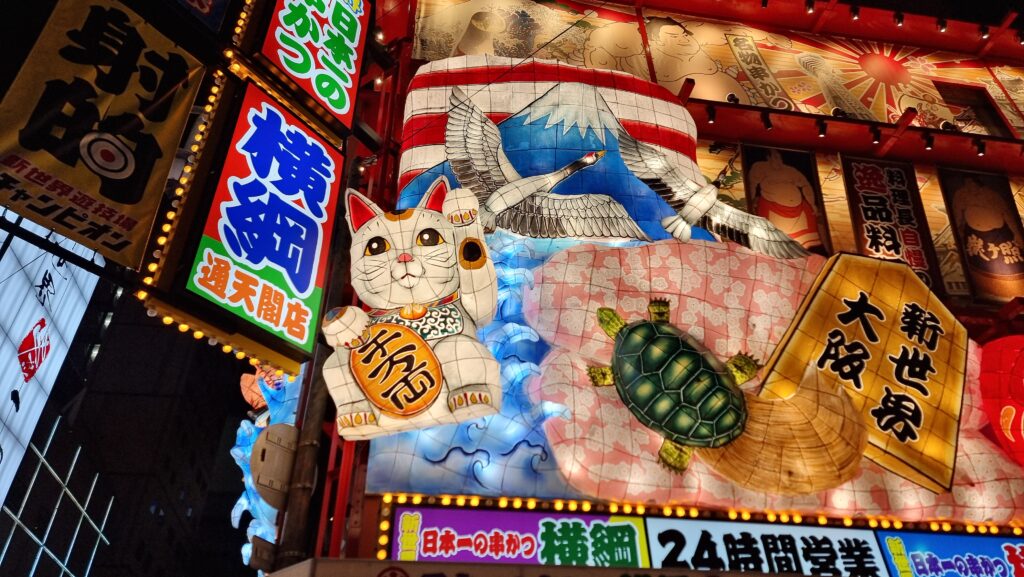
Osaka is a city of vibrant contrasts — from its historic castles and tranquil shrines to buzzing nightlife and world-class cuisine. Whether you’re a first-time visitor or a seasoned Japan traveler, Osaka invites you to dive deep into its unique culture, warm hospitality, and, of course, its unparalleled food scene.
By following this guide’s detailed itineraries, travel tips, and local insights, you’re equipped to explore Osaka like a true local, uncover hidden gems, and create unforgettable memories.
Remember:
- Plan ahead, but leave room for spontaneous adventures.
- Respect local customs and etiquette to deepen your connection with the city.
- Embrace the food, sights, sounds, and people — Osaka’s charm lies in its lively spirit and welcoming heart.
Safe travels and enjoy every bite, sight, and sound in Japan’s Kitchen!



